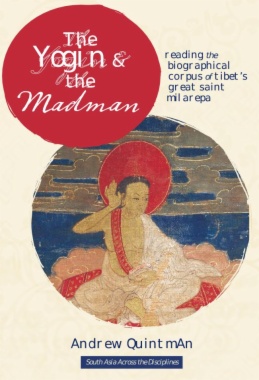Tibetan biographers began writing Jetsun Milarepa's (1052–1135) life story shortly after his death, initiating a literary tradition that turned the poet and saint into a model of virtuosic Buddhist practice throughout the Himalayan world. Andrew Quintman traces this history and its innovations in narrative and aesthetic representation across four centuries, culminating in a detailed analysis of the genre's most famous example, composed in 1488 by Tsangnyön Heruka, or the "Madman of Western Tibet." Quintman imagines these works as a kind of physical body supplanting the yogin's corporeal relics.
- Table of Contents
- Acknowledgments
- Introduction
- 1. Earliest Sources: A Biographical Birth
- 2. Proto-Lives: Formations of a Skeletal Biography
- 3. Biographical Compendia: Lives Made Flesh
- 4. A New Standard: Tsangyon Heruka's Life and Songs of Milarepa
- 5. The Yogin and the Madman: A Life Brought to Life
- 6. Conclusions
- Epilogue: Mila Comes Alive!
- List of Abbreviations
- Appendix 1: The Life of Jetsun Mila by Gampopa
- Appendix 2: Text Colophons, English Translations, and Tibetan Transcriptions
- Appendix 3: Text Outlines and Concordances
- Notes
- Bibliography
- Index

